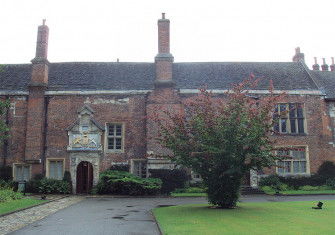The Palace of Westminster: Repairs, Renovations and Moving Out
Parliament has faced relocation and renovation before, as it tries to balance modernity with tradition

After the Palace of Westminster was bombed during the Second World War, Winston Churchill insisted that the Commons should be recreated as it stood before the damage. Churchill claimed ‘we shape our buildings, and afterwards, our buildings shape us’.
Despite this attachment to the New Palace of Westminster, there have been calls for Parliament to move away from the traditional site. Last week, a report examining the necessary repairs and alterations to the Palace of Westminster suggested that if MPs and Lords remained in the Palace, the repairs would cost £5.7 billion over the course of 32 years. However, if the building were to be vacated, the cost would be reduced to £3.5 billion over six years.
Several different potential locations for Parliament have been outlined. Generation Rent has suggested that Parliament be relocated to Hull, and the Palace of Westminster turned into affordable housing. Should Parliament need to move to an alternative location while repairs were completed, suggestions include Birmingham or Manchester, as well as sites across London. Commentators are split over whether it should move to a more suitable building or continue to meet in the 19th-century Palace of Westminster while repairs are completed.
The current debate echoes discussion about the location of Parliament during the 1830s. Then, the House of Commons was particularly problematic. Following the passage of the Reform Act in 1832, St Stephen’s Chapel, the former House of Commons, was home to 658 MPs, yet the floor of the House of Commons could only seat 300. The conditions within the House were cramped and uncomfortable, and poor ventilation led to complaints that the atmosphere was damaging to the health of MPs. One commentator remarked that the British House of Commons was reminiscent of ‘the second edition of the Black hole of Calcutta’.
Alternative sites such as Hyde Park or St James’s Park were suggested for a new building for Parliament. This would allow a purpose-built building for Parliament to be constructed that would be designed to ease the pressures of modern parliamentary business. Plans for a new Houses of Parliament included a Commons chamber which would be able to accommodate all members, as well as additional room for offices and committee rooms. These ideas have resurfaced in the current debate. The plans were rejected primarily due to the expense of constructing a new building.

The fire of 1834 destroyed large sections of the medieval palace, including both the House of Commons and House of Lords, parliamentary offices and committee rooms. Yet parliamentarians were still reluctant to move from the traditional Westminster site. In the immediate aftermath of the fire, William IV offered Buckingham Palace for the use of Parliament, hoping to dispose of a residence he disliked. However, Melbourne was ‘unwilling to be the Minister who should advise your Majesty, upon his responsibility, to remove the Houses of Parliament from their ancient and established place of assembly at Westminster’.
Despite the inconvenience of the Westminster site, the historical associations it had exerted a strong pull over the imaginations of parliamentarians. The Palace provided a link with the past and supported a narrative of political progress. It evoked the memories of great parliamentarians such as Charles James Fox and William Pitt the Younger, whose political rivalry was associated with one of the great ages of parliamentary oratory. After the political upheaval of Catholic emancipation (1829), followed by the 1832 Reform Act, the Palace of Westminster also provided an important symbol of stability and continuity. As a result, despite the extensive damage caused by the fire of 1834, Parliament continued to meet in temporary accommodation constructed within the ruins of the Old Palace until the occupation of the New Palace of Westminster in 1852.
The New Palace of Westminster aimed to combine tradition with the necessary space to ease everyday parliamentary life. Yet, from the first use of the New Palace, its critics suggested the building was not a place built for business. These sentiments have been revisited in recent weeks as different options for the repairs to the Palace of Westminster are explored. However, the questions remain over whether the 150-year-old Gothic palace should remain as the home of Parliament, or whether the cost and extent of the required repairs will force it away from it traditional site of residence.
Rebekah Moore is a doctoral student at the Institute of Historical Research, researching the temporary Houses of Parliament and the New Palace of Westminster, 1830-1860.






